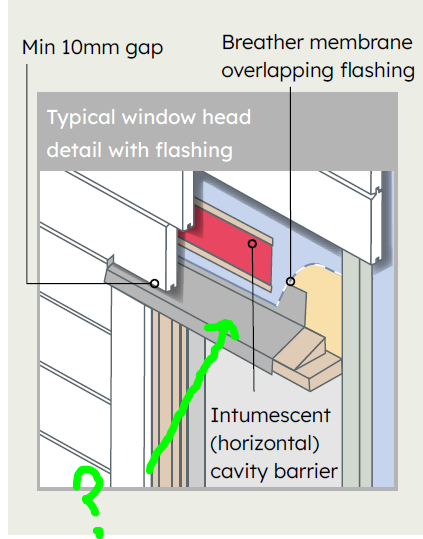
marmic
Members-
Posts
112 -
Joined
-
Last visited
-
Days Won
1
marmic last won the day on October 24
marmic had the most liked content!
Recent Profile Visitors
The recent visitors block is disabled and is not being shown to other users.
marmic's Achievements

Regular Member (4/5)
18
Reputation
-
stainless steel screws for chestnut cladding / decking etc
marmic replied to marmic's topic in Building Materials
I looked at these but only A2, they also offer A4 with a slighty different [deck version] - but decided the square/robertson drive not for me with more chance of camming out - albeit will probably 'stick on the bit better' and perhaps look a little nicer -
stainless steel screws for chestnut cladding / decking etc
marmic replied to marmic's topic in Building Materials
-
This might help if anyone else searching for stainless steel screws for chestnut cladding / decking etc in what I found to be a significant minefield with massive cost and clearly quality differentials! A good few hours down the pan! Eventually found these and placed order today - proof will be in the pudding so no comments on quality etc as yet but feeling quietly confident. So not a recommendation - let's hope it will be................ You can also speak with a normal human who knows what they are talking about! https://www.endurastainless.com/stainless-woodscrews/decking-screws---countersunk-stainless-steel---torx-drive/decking-screw-countersunk-torx-tx-drive-stainless-steel-a4-marine-grade-316 also very interesting: https://www.fastenerusa.com/blog/tell-screw-stainless-steel?srsltid=AfmBOoogzyXC-QceFYTVxyxBdILjVskzH34yHohaOgi9x-y49Rw3NaQG
-
Recommended method for connecting 40/50mm wastes to a soil stack
marmic replied to Annker's topic in Waste & Sewerage
i will be interested to see replies as we'll be doing something similar soon - eveything into one stack / drain. A tip I've been given is to have a dedicated waste pipe from shower to avoid the trap being 'siphoned out' and a lovely scent entering the bathroom! -
Payment Terms - Pay everything upfront?
marmic replied to Mulberry View's topic in General Self Build & DIY Discussion
On supply and install contracts there's no way I would agree to pay everything up front - has to be something left on table. They do have to balance their risk too of course. As JohnMo said it's a two way street - they want your money probably more than you need their services. But ensure agreed in advance - don't negotiate later. No names but a number of suppliers were crossed off my list just for being unreasonably demanding on payment terms - problem is most people tend to be compliant and do as they are told - and many companies know this. The sooner everyone gets a bit tougher with these types of suppliers the better! One company (not windows and doors) I recall was demanding unreasonable payments and also wanted the most ridiculous contract I've ever seen signed - straight in the bin. Was a throwback to 80's/90's double glazing! Appreciate us self builders have less clout than prinicipal contractors, but the PO in my book has to be the primary contract and usually is. Thankfully we're now at the stage of smaller packages and day rates with local trades we know and trust..............and then it will be lots of DIY weekends for stuff that can take longer................ if you haven't commited already strongly suggest talking to Simon at Nordica. They can supply the same product. -
no opinions?? a rare event !! .................. 😀
-
ps - my work wednesday is getting ducts ready etc - electrician pulling the cables (design/supply/install/certify)
-
Morning all, Not the correct department to post in but something up with website not enabling some to be selected! As ever because we are doing something a bit different to 'normal' have another conundrum so todays question requiring opinions/answers/thoughts etc please - don't be shy: We have flexible ducts into plant room entering through floor for incoming electric main, STP, RWH, PV, external lights/power, data. (Only holes in walls are for ASHP/MVHR - must avoid any more for various reasons including passivhaus high performance). Suddenly feeling twitchy as some of these ducts finish outside above floor level - thinking possible water ingress over time, or am I overthinking this? We also have ducts for water (RWH already in and future main) but these terminate underground at low level so they are fine The one directly next to house currently out of ground I'm currently thinking cut back a little to slightly above ground level and seal with foam + silicone once cables in. Is this correct? for data cables the duct end will be higher but will terminate in adjacent outbuilding which is above ground built off piers - so not concerned there about water through end of duct, but will still seal up open end to prevent insects/rodents. But what about where it's above ground for a short distance and where it enters ground and in ground - is there a risk of water entering over time if chewed by rodents for example? Albeit will they actually chew it as no food source there - thinking probably not as we are currently using same sort of flexible pipe for a temporary grey water drain at ground level and not been touched. for the incoming main (which is my main concern): Large armoured cable running from green box (with meter) about 60m away. This will just be laid on ground parallel with and tight to hedgerow (covered in brush and stable mucking out to prevent it being seen and theft) and will gradually sink. Where it turns away from hedge to house it will then enter duct (higher than floor level) which then goes underground for the last bit of it's journey. Do I carry on as planned and seal up the end, or do I need to dig a hole where duct currently disappears into ground and cut it underground below floor level and seal it there? STP/RWH lower so no concerns there. I need to decide what to do ready for Wednesday - day off employed work to get ready for second fix electrics commencing next week, which includes pulling cables........ many thanks...........M
-
if only we'd had the room! electric oil filled radiator and large bills, and electric blanket of course! Albeit once we're finally in the house we'll use very little energy - in theory...............
-
evening all from a rainy Kent - here comes the mud again! Hit a conundrum! We commence battening Monday and was about to finalise an order for sweet chestnut horizontal cladding couple days ago - decision had been made back in summer to to use a rebated feather edge. BUT, having picked up the samples again noticed couple splits at rebated end - a section 'peeled off' easily with some small blotchy dark marks in the split. So now concerned about stablity and possible diseased trees from this source? I won't name at this moment in time and am due to speak with them Monday - they have a good reputation so may be able to continue as planned if explainable - but my confidence isn't good at present so going back to the start reviewing options again. We have to use sweet chestnut (as discharged planning) and horizontal The reasons for the decision to use rebated feather edge was visual preference of feather edge but being rebated overall thickness less and sits flatter, and as long as machined at slightly increased moisture content (probably nearly therre again now) it can be racked up without being concerned about expansion gap. Also a sustainable source. Normal feather edge might be an option, but due to how I've detailed fascia/barge/corners it becomes a headache / may not work - and subject to wider boards in sweet chestut being available for window reveals - albeit could use cladding and joint, but would rather not (windows set back - passivhaus) Shiplap (angled or scalloped) was no.2 choice - thicker too so perhaps more stable, but I'm now concerned about the thin machined sections for the T&G joint. But sample does seem robust. Has an expansion gap built in (to joint) so can just be racked up. Half lap - thicker than rebated feather edge again and simple rebates leave thicker sections than shiplap which is feeling far more comfortable - but expansion gaps need to be left. I don't have time to do this myself and we don't want to add risk - the chap who will be fixing for us is more than capable, but I've learnt through the process of this build to keep things as simple as possible as people aren't always as careful as I would be. 1. am I missing any options? 2. any experiences with different profiles / sweet chestnut please? 3. any supplier / product recommendations? 4. any any general opinions out there please? usually is !! 😆 also with the different profiles the old question of how to fix, what with (stainless for sweet chestnut regardless and predrill), and the old 1 or 2 fixings debate! many thanks...................m
-
or pallets and old rubber stable mats 😁
-
flashing over windows and doors - timber cladding
marmic replied to marmic's topic in Building Materials
many thanks - was thinking that as a possibility if I couldnt find a more purposeful trim and already have a roll here....... I did same on a garden office (posh shed!) few years ago at last place but wrapped it down over and stapled to the front edge of the reveal board (which were gravel boards!) - not sure how well it will withstand UV / full exposure etc. -
hello all, anyone know please if a preformed flashing like this/similar is available off the shelf from anywhere? so far not found.......... (25mm vertical battens + 21-25mm horizontal cladding/reval boards). ideally anthracite grey to match windows and roof. or if not best/easiest/recommded thing to use? be interested of course to know what others have used please................... many thanks
-
https://www.thehealthyhome.uk/
- 9 replies
-
- 1
-

-
- passivhaus
- technical
-
(and 1 more)
Tagged with:



